I recently had an exchange with @millycf1976 about violence in Jamaica. She explained how her childhood home, Jamaica, has been stolen from her, from family, and from neighbors by pervasive violence. This was a disquieting conversation so I began to investigate socioeconomic conditions of the country.
2008 Jackson Mississippi
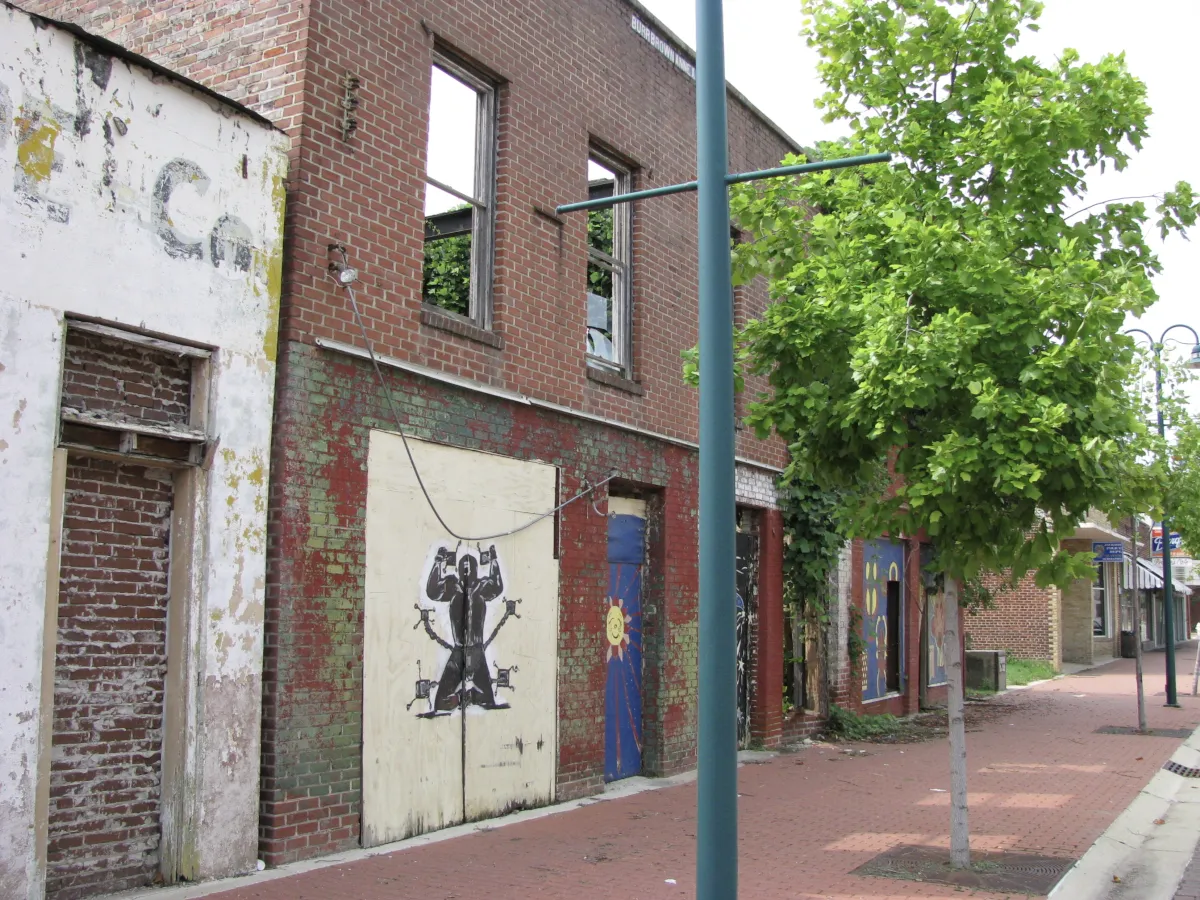
Credit: NatalieMaynor from Jackson, Mississippi, USA. Used under CC 2.0 license. Jackson has suffered its calamities and these calamities have left the city with daunting challenges. In 1979 the Pearl River swelled and flooded the city to levels not see before in recent memory. In 2022, less severe flooding damaged a water treatment plant and left the people of the city without clean, safe water. The municipality has to date been incapable of remedying the problem and consistently delivering clean water to its residents.
Rampant violence is not unique to Jamaica. In the U.S., for example, Jackson Mississippi has the highest reported murder rate in the country. As a matter of fact, in January of 2022 the reported murder rate in Jackson was 100 per 100,000. For the entire island of Jamaica, the reported murder rate in November 2022 was 49.4 per 100,000. In both Jamaica and Jackson authorities report that gangs drive the violence.

Gangs Have Existed Since Ancient Times
It does not seem to be a time or place that leads to the development of gangs, but rather an economic and social dynamic. In some cases, the gangs have been associated with political parties or figures. This is the case, it has been suggested, with powerful gangs in Jamaica. It was the case in mid-19th-century New York. In the picture below two gangs with political affiliations battle it out in the streets of New York.
Dead Rabbits Battle the Bowery Boys in Five Points
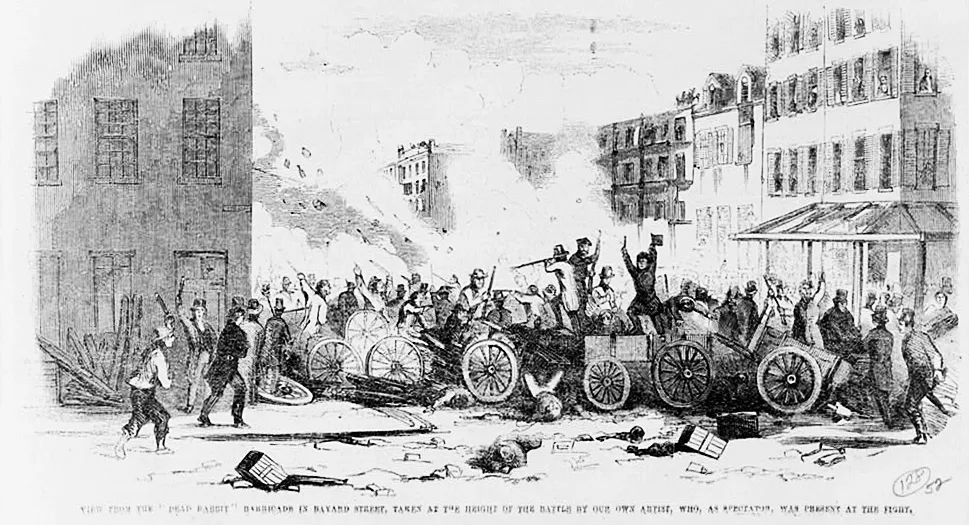
Credit: Illus. in: Frank Leslie's illustrated newspaper, v. 4, (1857 July 18), p. 108. Public domain

As I read about Jamaica and its struggle with crime, I looked at pictures and videos of some cities on the island country that have high crime levels. Always gangs were featured in these images. Pictures of children were captured in the frames. These children are the future gang recruits. Without them, it is likely gangs would wither on the vine.
Traditionally, authorities address gang violence by going into neighborhoods and arresting members. Soldiers and police do drug busts and gun confiscations. But these enforcement actions don't seem to make an enduring dent in gang activities. The effect of these enforcement actions is a little like lobbing off the tail of a young alligator. In time, the juvenile alligator's tail will grow back. The gang will replenish its strength with new recruits. Those recruits, for the most part, will be children who live in the neighborhoods where gangs operate.
My grim realization, that children are the lifeblood and future of gangs, motivated me to look at classic child development theories to try and understand how we can deprive gangs of their future. Why are children attracted to gangs? Why are they not drawn to legitimate social institutions? How do gangs succeed where these institutions fail? If we, if our leaders understood the mechanism behind child recruitment, maybe we could cut off the head of this monster instead of its tail.
I considered respected theories of childhood development with an eye to relating these theories to gang recruitment. No theory has all the answers. No theory is universally accepted. But many of the psychologists/social scientists who write about child development do have valuable ideas that might help to inform actions that would impede recruitment of children into gangs.

Maslow: Child Development and the Hierarchy of Needs
In 1943 Abraham Maslow published a paper on child development in which he described a 'Hierarchy of Needs'. He presented this hierarchy in the form of a pyramid. He place the most basic, essential needs as a foundation, at the bottom. The pyramid consisted of five layers (pyramid below was created by me using Gimp and Paint, with a diagram from Perspectives in Psychological Science used as a model).
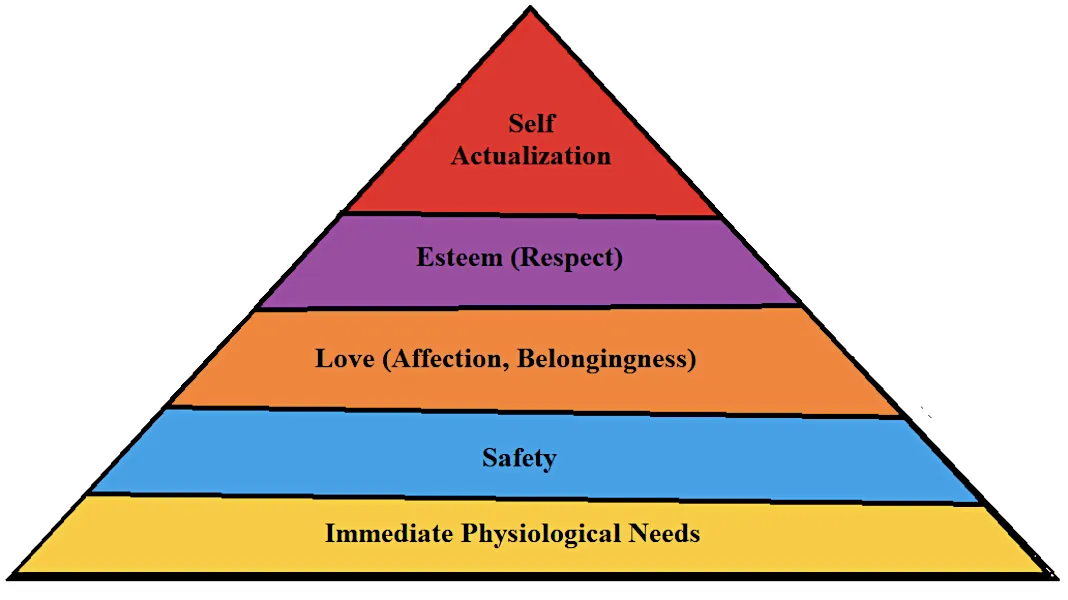
As needs are met, children move up the pyramid to satisfy the next set of needs. The first level of the pyramid is what a child needs to survive--food, shelter. Maslow's pyramid does not dictate that a need must be met 100% in order for a child to move on to the next level.
Do Gangs Fill Needs Not Met Elsewhere?
If a child is growing up in a home, or a community, where basic needs are neglected, where the child is not safe, then the child may look elsewhere for satisfaction of that need. If a child doesn't derive a sense of belonging, of esteem, or worth, from the home, the community or established social institutions, then the child may look elsewhere to satisfy these basic needs.
A 2010 bulletin issued by the U. S. Department of Justice on youth gang involvement stated that gang members explained their motivation for joining:
• For protection
• For fun
• For respect
• For money
• Because a friend was in the gang
Other reports I've read emphasize the social aspect of a gang (belonging), safety the gang offers, status gang membership provides and opportunities to earn money. In essence, the gang is meeting needs present in Maslow's pyramid.

Lev Vygotsky: Sociocultural Theory of Cognitive Development
Lev Vygotsky published his work on child development in the early 20th century. He proposed what has been called the Sociocultural Theory of child development. In recent years increasing attention has been paid to his work, which emphasizes the influence of mentors and others in a child's environment.
Mangkong Girl With Baby Brother, Laos Vygotsky asserted that "learning is a crucially social process as opposed to an independent journey of discovery". Those beliefs and attitudes can be transmitted to the child by a More Knowledgeable Other, an MKO. In Vygotsky's view, every child is unique and responds to the social influences in the immediate vicinity--the Zone of Proximal Development. Vygotsky suggested "that children internalise and learn from the beliefs and attitudes that they witness around them." The views of other highly respected child development theorists contrast with Vygotsky's ideas about the pliable nature of a growing child. Piaget and Erikson, for example, suggest a more rigid pattern of development--distinct stages. For each of these two theorists, a child is almost programmed to proceed from one stage of intellectual development to another. However, in their theories, environment does have a profound influence on how the child progresses through those stages. (Note please that I am skipping over Freud. While there remain in practice Freudian psychologists, his psychosexual theory of childhood development has lost its relevance for many). Behaviorists: John Watson and B.F.Skinner Diagram of Pavlov's Conditioning Experiment With Dogs Pavlov's classic experiment with dogs illustrates this theory. By repeatedly ringing a bell every time food was presented, Pavlov 'conditioned' the dogs to salivate at the sound of the bell. Take Your Pick Curtailing the Development of Gangs If we don't give our children the kind of environment (according to just about every child psychologist) that leads to positive growth, then we are dooming our communities, and ourselves to a future in which gangs hold whole neighborhoods, and even cities, hostage.
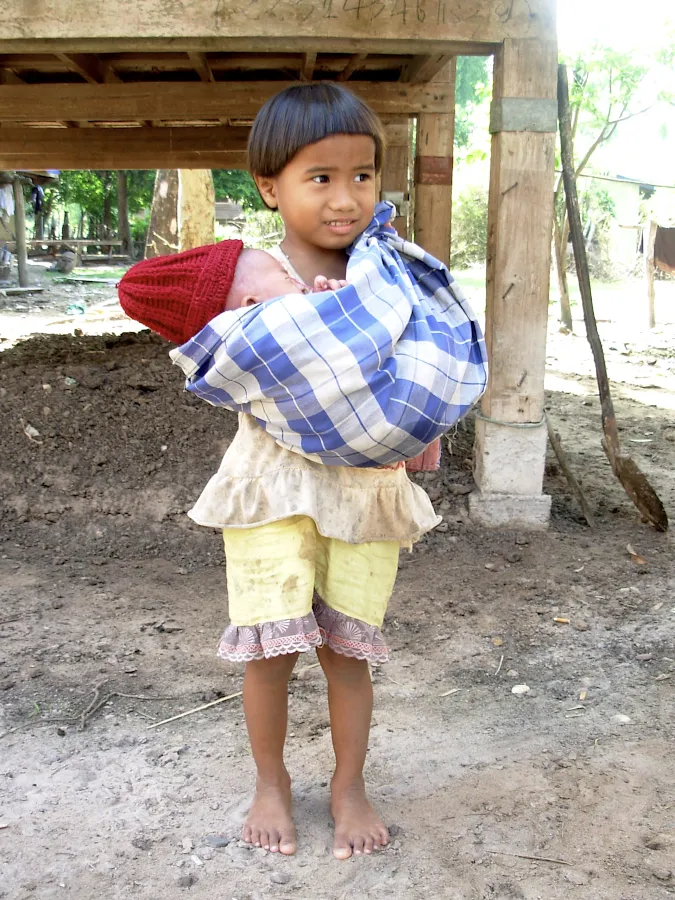
Credit: BigBrotherMouse. Used under CC 3.0 license. According to Vygotsky's Theory of Child Development, the cognitive growth of the baby in the picture will be influenced strongly by the care it receives from its sibling. In this case, the young girl is part of the baby's Zone of Proximal Development.*
According to the behaviorist school of child development, children are conditioned by their environment. As summarized by an article published on the Western Governor's University site, Watson, Skinner, and other behaviorists believed that a child's development could be determined entirely by its environment and not by its parents or its genetic heritage.
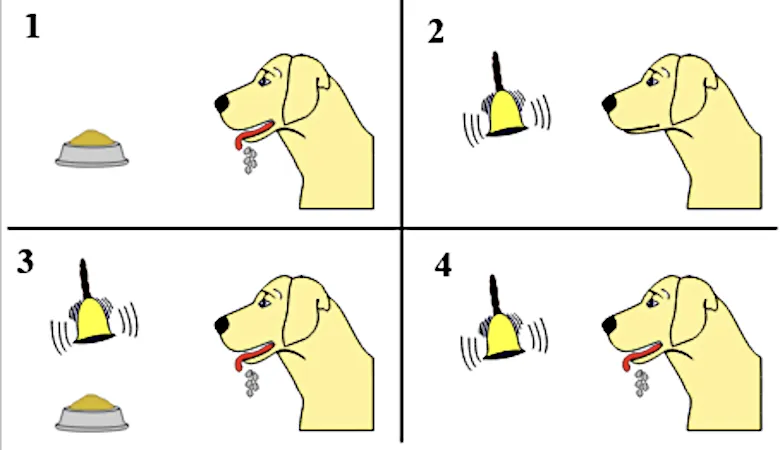
Maxxl². Used under CC Attribution-Share Alike 4.0 International, 3.0 Unported, 2.5 Generic, 2.0 Generic and 1.0 Generic license.
Which one of the psychologists I've mentioned has a persuasive theory, in your view? Vygotsky? Maslow? Skinner? Whichever combination of theories you choose, look at the video offered (by Free Documentary) below and try and imagine the influence this environment will have on the developing minds of children:
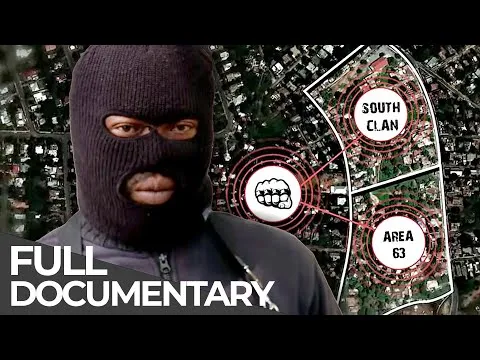
A serious effort to curtail the development of gangs would take an enormous concentration of resources. The effort would entail removing children from areas such as those depicted in the video above. As long as such communities exist, there will be children who are tempted to join a gang because that seems the most attractive alternative.

- @muelli,

A fractal made from an image he provided to the LMAC Image Library, LIL. - @yaziris,

An image he provided to the LMAC Image Library, LIL.
1.https://peakd.com/hive-126152/@millycf1976/reflecting-on-my-recent-visit-to-jamaica#@millycf1976/re-agmoore-rq9t6n
2.https://www.clarionledger.com/story/news/2022/01/27/jackson-mississippi-2021-homicides-highest-per-capita-murder-rate/9230045002/
3.https://travellersworldwide.com/is-jamaica-safe/
4.https://jamaica.loopnews.com/content/gang-feuds-still-fuelling-murders-jamaica-despite-over-400-arrests
5.https://www.wlbt.com/2021/02/11/so-jackson-has-gang-problem-what-does-that-mean/
6.https://www.cambridge.org/core/books/abs/cambridge-world-history-of-violence/gang-violence-in-the-late-roman-republic/96CED83F2809A92747F1851032F1E7A6
7.https://jamaica.loopnews.com/content/gangsters-now-co-operating-across-political-lines-says-chang
8.http://moglen.law.columbia.edu/twiki/bin/view/AmLegalHist/BenMarcu-FightingForIndependenceAtTheFivePoints
9.https://jamaica.loopnews.com/content/gang-feuds-still-fuelling-murders-jamaica-despite-over-400-arrests
10.https://www.reuters.com/world/americas/jamaica-renews-regional-states-emergency-due-gang-violence-2022-12-28/
11.https://www.smithsonianmag.com/smart-news/alligators-are-now-largest-species-known-regrow-severed-limbs-180976628/
12.https://www.aacap.org/AACAP/Families_and_Youth/Facts_for_Families/FFF-Guide/Children-and-Gangs-098.aspx
13.https://www.weather.gov/jan/1979_04_17_easter_flood
14.https://disasterphilanthropy.org/disasters/jackson-mississippi-water-crisis/
15.https://www.ncbi.nlm.nih.gov/pmc/articles/PMC3161123/
16.https://www.ojp.gov/pdffiles1/ojjdp/231116.pdf
17.https://tarrant.tx.networkofcare.org/kids/library/article.aspx?id=1814
18.https://ojjdp.ojp.gov/sites/g/files/xyckuh176/files/jjbulletin/9808/why.html
19.https://www.nationalgangcenter.gov/Content/Documents/Parents-Guide-to-gangs.pdf
20.https://www.nationalgangcenter.gov/Content/Documents/Parents-Guide-to-gangs.pdf
21.https://www.verywellmind.com/what-is-sociocultural-theory-2795088
22.https://www.gowriensw.com.au/thought-leadership/vygotsky-theory
23.https://www.futurelearn.com/info/courses/differentiating-for-learning-stem/0/steps/15505
24.https://www.wested.org/resources/zone-of-proximal-development/
25.https://www.gowriensw.com.au/thought-leadership/vygotsky-theory
26.https://positivepsychology.com/piaget-stages-theory/
27.https://positivepsychology.com/erikson-stages/
28.https://www.verywellmind.com/freuds-stages-of-psychosexual-development-2795962
29.https://www.wgu.edu/blog/what-behavioral-learning-theory2005.html#openSubscriberModal
30.https://www.simplypsychology.org/pavlov.html
31.https://www.youtube.com/@FreeDocumentary